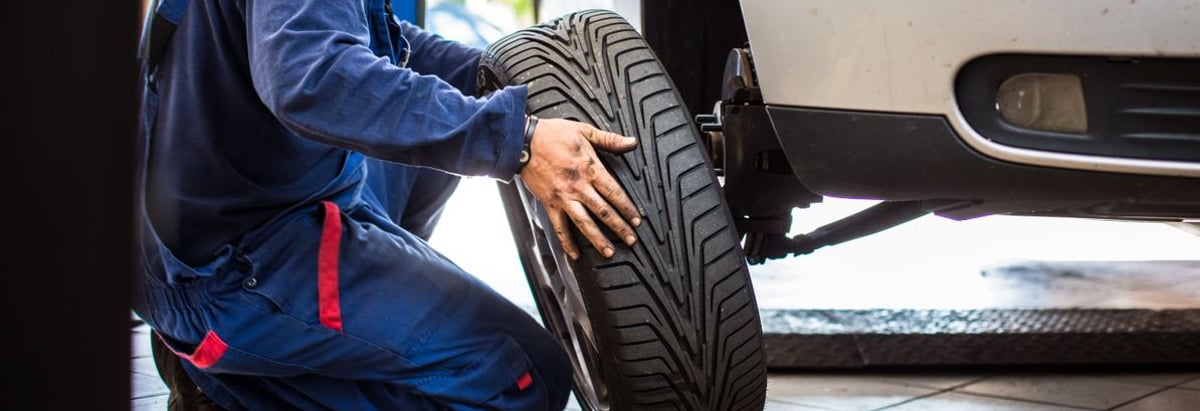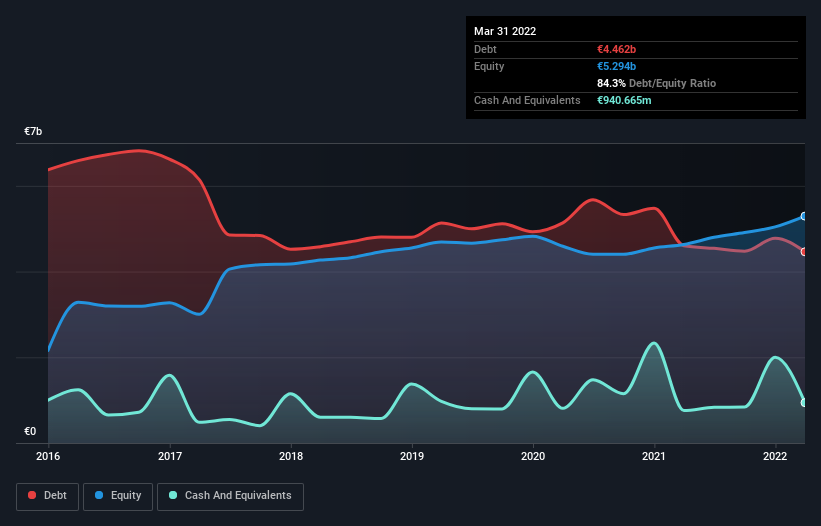- Italy
- /
- Auto Components
- /
- BIT:PIRC
These 4 Measures Indicate That Pirelli & C (BIT:PIRC) Is Using Debt Reasonably Well

Warren Buffett famously said, 'Volatility is far from synonymous with risk.' So it might be obvious that you need to consider debt, when you think about how risky any given stock is, because too much debt can sink a company. Importantly, Pirelli & C. S.p.A. (BIT:PIRC) does carry debt. But is this debt a concern to shareholders?
What Risk Does Debt Bring?
Debt is a tool to help businesses grow, but if a business is incapable of paying off its lenders, then it exists at their mercy. In the worst case scenario, a company can go bankrupt if it cannot pay its creditors. While that is not too common, we often do see indebted companies permanently diluting shareholders because lenders force them to raise capital at a distressed price. Of course, plenty of companies use debt to fund growth, without any negative consequences. When we think about a company's use of debt, we first look at cash and debt together.
See our latest analysis for Pirelli & C
How Much Debt Does Pirelli & C Carry?
The chart below, which you can click on for greater detail, shows that Pirelli & C had €4.46b in debt in March 2022; about the same as the year before. On the flip side, it has €940.7m in cash leading to net debt of about €3.52b.

A Look At Pirelli & C's Liabilities
Zooming in on the latest balance sheet data, we can see that Pirelli & C had liabilities of €3.03b due within 12 months and liabilities of €5.07b due beyond that. On the other hand, it had cash of €940.7m and €1.52b worth of receivables due within a year. So its liabilities outweigh the sum of its cash and (near-term) receivables by €5.64b.
When you consider that this deficiency exceeds the company's €4.17b market capitalization, you might well be inclined to review the balance sheet intently. Hypothetically, extremely heavy dilution would be required if the company were forced to pay down its liabilities by raising capital at the current share price.
We use two main ratios to inform us about debt levels relative to earnings. The first is net debt divided by earnings before interest, tax, depreciation, and amortization (EBITDA), while the second is how many times its earnings before interest and tax (EBIT) covers its interest expense (or its interest cover, for short). Thus we consider debt relative to earnings both with and without depreciation and amortization expenses.
Pirelli & C has a debt to EBITDA ratio of 3.2 and its EBIT covered its interest expense 6.7 times. This suggests that while the debt levels are significant, we'd stop short of calling them problematic. Notably, Pirelli & C's EBIT launched higher than Elon Musk, gaining a whopping 181% on last year. When analysing debt levels, the balance sheet is the obvious place to start. But it is future earnings, more than anything, that will determine Pirelli & C's ability to maintain a healthy balance sheet going forward. So if you want to see what the professionals think, you might find this free report on analyst profit forecasts to be interesting.
Finally, a company can only pay off debt with cold hard cash, not accounting profits. So we always check how much of that EBIT is translated into free cash flow. Over the last three years, Pirelli & C actually produced more free cash flow than EBIT. That sort of strong cash generation warms our hearts like a puppy in a bumblebee suit.
Our View
Pirelli & C's conversion of EBIT to free cash flow was a real positive on this analysis, as was its EBIT growth rate. But truth be told its level of total liabilities had us nibbling our nails. Looking at all this data makes us feel a little cautious about Pirelli & C's debt levels. While we appreciate debt can enhance returns on equity, we'd suggest that shareholders keep close watch on its debt levels, lest they increase. When analysing debt levels, the balance sheet is the obvious place to start. However, not all investment risk resides within the balance sheet - far from it. Case in point: We've spotted 2 warning signs for Pirelli & C you should be aware of.
If you're interested in investing in businesses that can grow profits without the burden of debt, then check out this free list of growing businesses that have net cash on the balance sheet.
New: Manage All Your Stock Portfolios in One Place
We've created the ultimate portfolio companion for stock investors, and it's free.
• Connect an unlimited number of Portfolios and see your total in one currency
• Be alerted to new Warning Signs or Risks via email or mobile
• Track the Fair Value of your stocks
Have feedback on this article? Concerned about the content? Get in touch with us directly. Alternatively, email editorial-team (at) simplywallst.com.
This article by Simply Wall St is general in nature. We provide commentary based on historical data and analyst forecasts only using an unbiased methodology and our articles are not intended to be financial advice. It does not constitute a recommendation to buy or sell any stock, and does not take account of your objectives, or your financial situation. We aim to bring you long-term focused analysis driven by fundamental data. Note that our analysis may not factor in the latest price-sensitive company announcements or qualitative material. Simply Wall St has no position in any stocks mentioned.
About BIT:PIRC
Pirelli & C
Manufactures and supplies tires for cars, motorcycles, and bicycles worldwide.
Adequate balance sheet and fair value.

